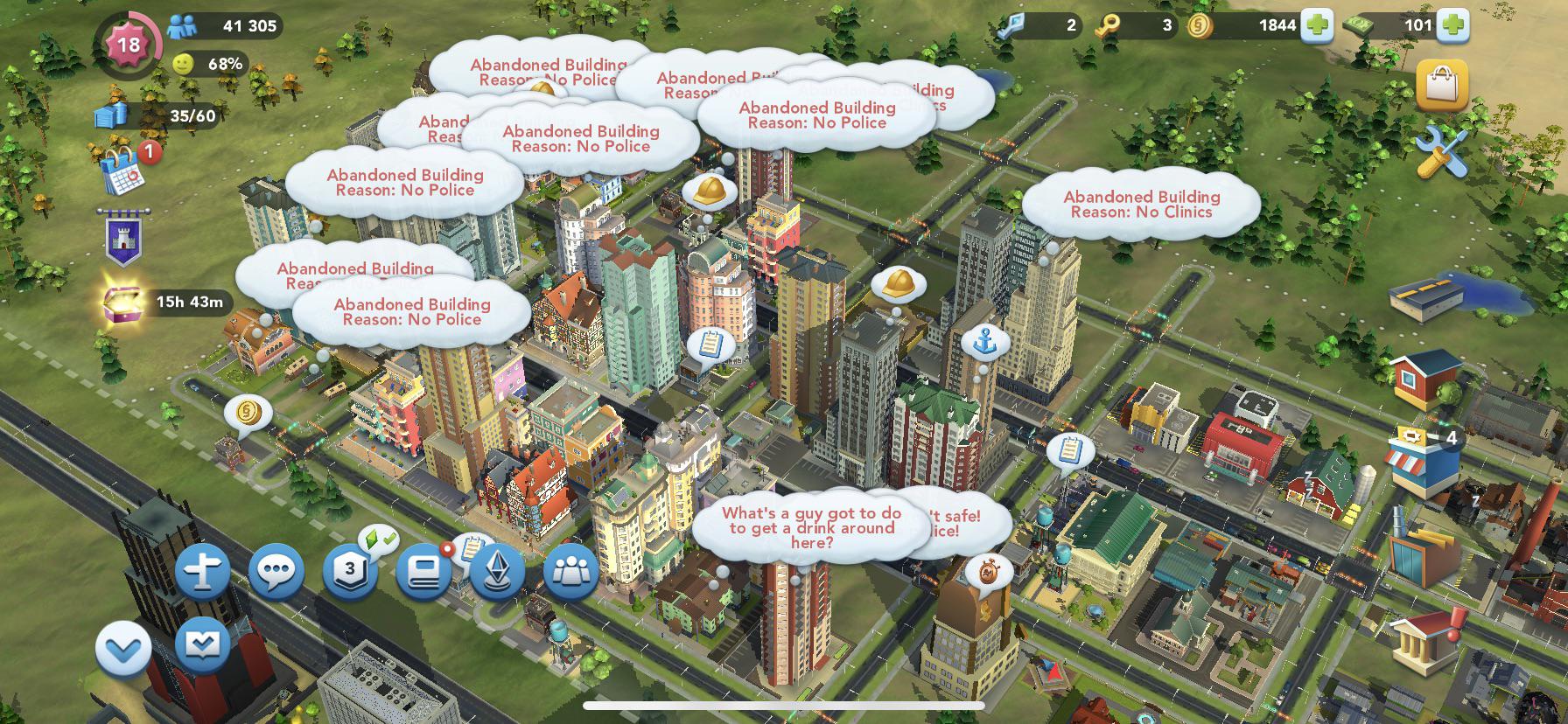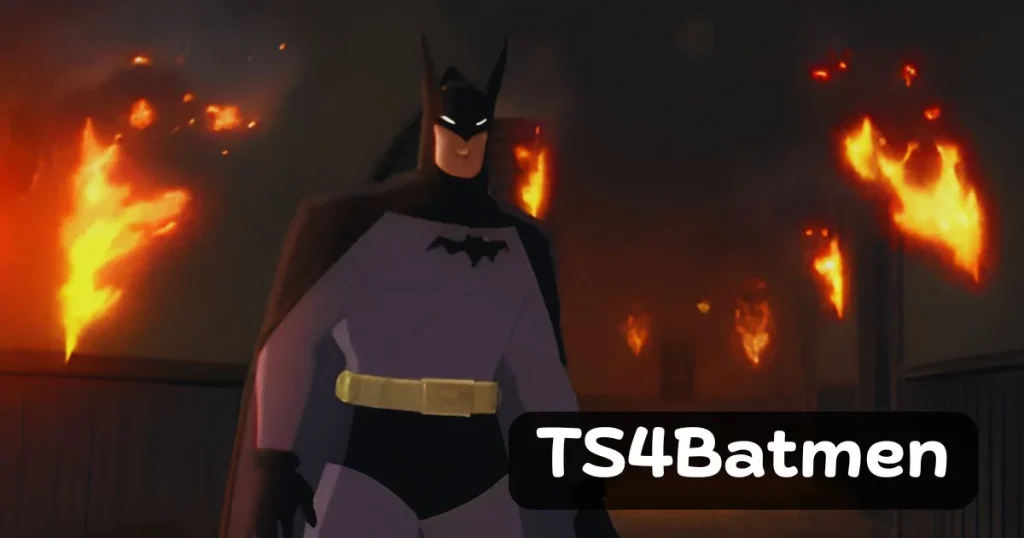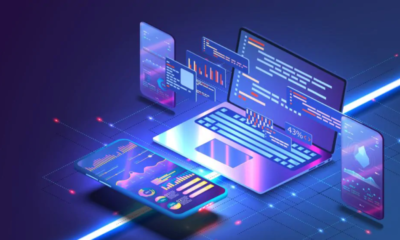Game
Futbolear: A Unique Fusion of Football and Volleyball

Futbolear is a captivating sport that blends the excitement of football with the dynamic nature of volleyball. It has gained significant popularity in recent years due to its unique gameplay and the fun it offers to participants. In this article, we will delve into the world of Futbolear, exploring its origins, rules, benefits, and impact on the sporting landscape.
Introduction to Futbolear
Futbolear, also known as Footvolley, is a sport that originated in Brazil in the 1960s. It combines elements of beach volleyball and football, creating a fast-paced and entertaining game suitable for players of all ages and skill levels.
Origin and History of Futbolear
The concept of Futbolear was born on the beaches of Rio de Janeiro, where beachgoers started playing a version of volleyball using their feet instead of hands. Over time, the game evolved, incorporating rules from football to create a unique fusion of the two sports.
Rules and Gameplay of Futbolear
Futbolear is played on a beach or sand court with a net dividing the two teams. The objective is to score points by hitting the ball over the net using only your feet, head, chest, or any other part of the body except the hands and arms. Similar to volleyball, teams have three touches to return the ball to the opponent’s side.
Equipment Required for Futbolear
To play Futbolear, minimal equipment is needed, including a regulation-sized net, a ball specifically designed for the sport, and appropriate footwear for playing on sand.
Benefits of Playing Futbolear
Futbolear offers numerous benefits, including improved agility, coordination, and teamwork skills. It provides a full-body workout and is a great way to stay active while enjoying the outdoors.
Futbolear vs. Traditional Sports
Compared to traditional sports like football and volleyball, Futbolear offers a unique blend of skills, combining the precision of football passes with the aerial dynamics of volleyball spikes.
How to Get Started with Futbolear
Getting started with Futbolear is easy. All you need is a group of friends, a suitable playing area, and the willingness to learn and have fun.
Futbolear Tournaments and Events
Futbolear has a growing competitive scene, with tournaments and events held worldwide. These competitions attract top players and showcase the sport’s excitement and skill.
Famous Futbolear Players
Several players have become iconic figures in the world of Futbolear, known for their exceptional skills and contributions to the sport’s development.
Futbolear’s Impact on Fitness and Fun
Playing Futbolear is not just about fitness; it’s also about having fun and enjoying the camaraderie of teammates and opponents alike.
Futbolear’s Popularity Worldwide
Futbolear’s popularity has spread beyond Brazil, with enthusiasts and clubs forming in various countries, contributing to the sport’s global appeal.
Future Prospects of Futbolear
With increasing recognition and interest, the future of Futbolear looks promising, with potential growth in participation, fan base, and professional opportunities.
Conclusion
In conclusion, Futbolear is a unique and exciting sport that combines the best elements of football and volleyball. Its accessibility, fun gameplay, and health benefits make it a favorite among sports enthusiasts worldwide.
FAQs about Futbolear
- How is Futbolear different from Footvolley? Futbolear and Footvolley are often used interchangeably to refer to the same sport, although there may be slight variations in rules and terminology based on regional preferences.
- Can anyone play Futbolear? Yes, Futbolear is suitable for players of all ages and skill levels, making it a inclusive and enjoyable sport for everyone.
- Is Futbolear played only on beaches? While Futbolear is often associated with beach settings, it can be played on various surfaces, including sand courts and indoor facilities.
- Are there professional leagues for Futbolear? Yes, there are professional Futbolear leagues and competitions that showcase the highest level of skill and talent in the sport.
- Where can I find more information about Futbolear? For more information about Futbolear, you can visit official websites, join local clubs or communities, and participate in tournaments and events.
Game
SimpCity: The Ultimate Guide to the Popular Simulation Game

SimpCity has taken the gaming world by storm as a captivating city-building simulation game that challenges players to design, manage, and expand their own virtual metropolis. With its engaging mechanics, charming visuals, and strategic depth, SimpCity offers endless hours of fun for both casual gamers and simulation enthusiasts.
In this article, we’ll explore what SimpCity is, its gameplay mechanics, tips for success, and why it has become such a beloved game.
What is SimpCity?
SimpCity is a city-building simulation game where players take on the role of a mayor tasked with constructing and managing a thriving city. The game combines elements of strategy, resource management, and creativity, allowing players to:
Inspired by classic city-building games like SimCity, SimpCity offers a fresh, modern take with simplified mechanics and a more accessible gameplay experience.
Gameplay Mechanics
1. City Planning & Zoning
Players must strategically place different zones to ensure a balanced and efficient city:
- Residential Zones – Houses your Sims (citizens).
- Commercial Zones – Provides shops and services.
- Industrial Zones – Produces goods and jobs but may increase pollution.
2. Infrastructure & Services
A successful city requires proper infrastructure:
- Roads & Transportation – Keep traffic flowing smoothly.
- Utilities – Provide power, water, and waste management.
- Public Services – Police, fire stations, and hospitals keep citizens safe and happy.
3. Economy & Budget Management
Players must balance income (taxes, businesses) with expenses (construction, maintenance) to avoid bankruptcy.
4. Citizen Happiness & Disasters
Keeping citizens happy involves managing pollution, traffic, and amenities. Random disasters like fires, earthquakes, or alien invasions add excitement and challenge.
Tips for Building a Successful City
- Start Small – Focus on a stable economy before expanding.
- Plan Efficient Layouts – Avoid traffic jams by designing well-connected roads.
- Balance Zones – Too much industry causes pollution; too many shops may lead to unemployment.
- Invest in Public Services – Happy citizens pay more taxes!
- Prepare for Disasters – Keep emergency services ready.
Why is SimpCity So Popular?
- Easy to Learn, Hard to Master – Simple mechanics with deep strategy.
- Creative Freedom – Design unique cities with different themes.
- Regular Updates – New buildings, challenges, and events keep the game fresh.
- Community & Competitions – Players can share cities and compete for the best designs.
Conclusion
SimpCity offers a perfect blend of strategy, creativity, and management, making it a must-play for fans of simulation games. Whether you’re a seasoned city-builder or a newcomer, SimpCity provides endless opportunities to craft your dream metropolis.
Game
Ts4batmen : How a Comic Book Hero Became a Global Icon

In the vast universe of comic book superheroes,Ts4batmen few have managed to transcend their original medium to become global icons quite like Ts4batmen. This character, born from the vibrant imagination of creators and nurtured by dedicated fans, has carved out a unique place in popular culture. Let’s explore how Ts4batmen evolved from a comic book hero into a symbol recognized around the world.
The Origins of Ts4batmen
Ts4batmen was first introduced in the pages of an indie comic book series, aiming to blend traditional superhero tropes with contemporary themes. The character’s name itself is a clever play on words, suggesting both the classic allure of bat-inspired heroes and the digital era’s penchant for abbreviations and branding. The creators intended for Ts4batmen to resonate with a younger audience while still paying homage to the classic archetypes of the genre.
The character’s backstory is rich and complex. Ts4batmen, a vigilante fighting against urban crime and social injustice, embodies the struggles of modern society. His narrative arc includes themes of redemption, resilience, and the quest for justice, making him relatable to a diverse audience. These themes struck a chord with readers and laid the foundation for the character’s enduring popularity.
Rise to Fame
As the comic series gained traction, Ts4batmen’s fanbase began to expand beyond the pages of comic books. Online platforms, social media, and fan art played significant roles in this evolution. Fans shared their interpretations of Ts4batmen, creating a vibrant community that celebrated the character’s ideals. This grassroots support helped the character gain visibility and appeal, eventually catching the attention of larger media outlets.
The transition from comic book pages to other forms of media, including animated series, video games, and merchandise, was pivotal. Each adaptation retained the essence of Ts4batmen while exploring new storytelling avenues, thereby attracting new fans. Merchandise ranging from action figures to apparel allowed fans to express their admiration, further solidifying the character’s status as a cultural phenomenon.
Cultural Impact
Ts4batmen’s impact extends beyond entertainment. The character has become a symbol of hope and resilience, inspiring countless individuals to stand up against adversity. Through various campaigns and initiatives, Ts4batmen has been associated with social causes, including mental health awareness and community empowerment. This connection to real-world issues has endeared the character to fans who appreciate the blend of escapism and social commentary.
Moreover, Ts4batmen’s appeal is amplified by its inclusivity. The character’s narratives often feature a diverse cast of supporting characters, showcasing different backgrounds and experiences. This representation resonates with a global audience, making Ts4batmen a beacon of unity in a fragmented world.
The Future of Ts4batmen
As we look to the future, the potential for Ts4batmen to evolve further is immense. With advancements in technology and storytelling, there are exciting opportunities for interactive experiences that could allow fans to engage with the character in unprecedented ways. Virtual reality, augmented reality, and immersive storytelling could bring Ts4batmen’s adventures to life like never before.
In addition, as the world continues to grapple with complex social issues, Ts4batmen’s role as a champion for justice will likely become even more relevant. The character’s ability to adapt to changing societal dynamics ensures that he will remain a significant figure in popular culture.
Conclusion
From his humble beginnings in indie comic books to his status as a global icon, Ts4batmen exemplifies the power of storytelling and the ability of characters to connect with audiences on multiple levels. His journey reflects not only the evolution of comic book heroes but also the changing landscape of culture and society. As Ts4batmen continues to inspire and entertain, one thing is clear: he is more than just a comic book hero; he is a symbol of hope for generations to come.
FAQS
Q1: What is “Ts4batmen”?
A: “Ts4batmen” is a comprehensive exploration of the journey of the iconic comic book hero, Batman, from his creation in the late 1930s to his status as a global icon today. It examines the cultural impact, adaptations, and enduring popularity of the character.
Q2: Who created Batman?
A: Batman was created by artist Bob Kane and writer Bill Finger, making his first appearance in Detective Comics #27 in 1939.
Q3: What themes does “Ts4batmen” explore?
A: The work delves into themes of justice, morality, and the duality of human nature, reflecting on how these themes resonate with audiences across different cultures and eras.
Q4: How has Batman evolved over the years?
A: Batman has undergone significant transformations in his portrayal, from the campy character of the 1960s TV series to the darker, more complex interpretations seen in graphic novels and films. “Ts4batmen” examines these shifts in context.
Q5: Why is Batman considered a global icon?
A: Batman’s universal themes, compelling narrative, and diverse adaptations—from comics and movies to merchandise and video games—have made him relatable and appealing across different cultures, contributing to his status as a global icon.
Q6: What are some notable adaptations of Batman?
A: Key adaptations include Tim Burton’s and Christopher Nolan’s films, the animated series, and various graphic novels such as “The Dark Knight Returns” and “Batman: Year One.”
Q7: How does “Ts4batmen” address the impact of fandom?
A: The work discusses how fan communities have shaped the character’s narrative, driven demand for new stories, and created a cultural phenomenon around Batman through conventions, cosplay, and online platforms.
Q8: Are there any interviews or insights from creators in “Ts4batmen”?
A: Yes, “Ts4batmen” includes interviews with comic book writers, artists, filmmakers, and scholars who provide valuable insights into the character’s development and impact.
Q9: Who is the target audience for this work?
A: “Ts4batmen” is aimed at both long-time Batman fans and newcomers, as well as scholars interested in pop culture, comic book history, and media studies.
Q10: Where can I find “Ts4batmen”?
A: “Ts4batmen” is available at major bookstores, online retailers, and comic book shops. You can also check local libraries for copies.
Game
Halo (2003) Game Icons Banners: A Detailed Guide
The year 2003 marked a significant moment in gaming history with the release of Halo (2003) Game Icons Banners Alongside its thrilling gameplay and expansive storyline, the game became renowned for its distinct visual elements—specifically, its game icons and banners. These graphics not only represented Halo’s branding but also played a crucial role in building a dedicated fanbase. From in-game visuals to community-driven artwork, the game icons and banners left a lasting impression on gamers worldwide. This article delves deep into the story behind these iconic symbols, their evolution, and how they became integral to Halo’s identity.
The Origins of Halo Icons and Banners
In 2003, “Halo: Combat Evolved” burst onto the gaming scene, quickly becoming a cultural phenomenon. One of the standout features was the use of game icons and banners, which helped to establish a strong brand identity. The early designs of these icons were heavily influenced by the military aesthetics within the game. Strong, bold lines and futuristic elements were key components of the visual design. From the emblem on the Master Chief’s armor to the team insignia in multiplayer modes, these graphics were more than just placeholders—they became symbols of the game’s core themes of warfare and survival.
Evolution of Halo Icons Over Time
As the Halo series progressed, so did the visual representation of its game icons. From Halo 2 to the latest installments, the icons evolved to reflect changes in game design and technological advancements. Early designs were simple but effective, often incorporating geometric shapes that were easy to recognize. With each new title, the icons grew more complex, incorporating 3D elements and dynamic animations. This evolution kept the franchise visually fresh and appealing to both longtime fans and newcomers.
Key Design Elements of Halo Banners
The banners in Halo were equally important. They weren’t just background art; they set the mood for the game’s many stages and missions. The banners often featured detailed landscapes or battle scenes, showcasing the depth and complexity of the Halo universe. Key design elements included dark, brooding skies, high-contrast color schemes, and minimalist typography, all of which worked together to create an immersive gaming experience. These banners became synonymous with the feeling of stepping into an epic sci-fi adventure.
How Icons and Banners Enhance Gameplay
The icons and banners in Halo weren’t merely decorative; they also played a functional role in enhancing gameplay. For instance, the team icons in multiplayer modes made it easier for players to quickly identify allies and enemies, which added to the game’s fast-paced, tactical nature. Similarly, banners were used to signify different environments or levels, subtly indicating the tone of the mission ahead. These visual cues helped players immerse themselves more fully in the game world.
Fan-Made Halo Banners and Icons
The Halo community has long been known for its creativity, and this extends to fan-made banners and icons. These fan-created visuals often pay homage to the original designs while adding unique twists, such as custom color palettes or thematic elements that weren’t in the official versions. Some fan-made banners have even become popular enough to be used in unofficial tournaments and community events, showing the far-reaching impact of Halo’s visual identity.
Halo’s Cultural Impact Through Visuals
It’s hard to overstate the cultural impact that Halo’s visuals have had on the gaming community. The game icons and banners became instantly recognizable symbols, not just within the gaming world but also in popular culture. They appeared on everything from merchandise to fan art, solidifying Halo’s status as one of the most influential games of its time. These visuals played a key role in making Halo a household name, especially among early 2000s gamers.
The Role of Color in Halo Icons
Color played a significant role in the effectiveness of Halo’s game icons. Each faction and team in the game had its own distinct color scheme, which made it easy for players to distinguish between friend and foe. The colors used in the banners and icons also helped set the emotional tone for each mission, whether it was the cool blues of a nighttime battlefield or the fiery reds of an impending alien invasion.
Iconography in Halo’s Multiplayer Mode
In multiplayer mode, the use of icons was crucial for both gameplay and team dynamics. Each player had a customizable emblem, which helped to distinguish individual identities within a team. This iconography not only added a layer of personalization but also contributed to the overall strategy of the game. The ability to quickly recognize your teammates’ icons during intense firefights was invaluable, enhancing both gameplay and camaraderie.
Banners and Icons in Halo’s Community Events
Halo’s community events have long been a staple of the franchise, and the banners and icons used during these events are often just as iconic as the games themselves. Whether it’s a new tournament banner or a limited-edition icon, these visuals serve as mementos for players who participate in these events. They often reflect the theme of the event and become cherished keepsakes within the Halo community.
Future of Halo Visuals: What’s Next?
As Halo continues to evolve, so too will its visual identity. With advancements in technology, we can expect future icons and banners to be even more dynamic, incorporating elements like real-time animations and 4K resolution. While the core design elements are likely to stay true to the original game, new features will undoubtedly push the boundaries of what is possible in video game visuals.
FAQs
- What are the origins of Halo’s game icons? Halo’s game icons originated from the military aesthetics featured prominently in the game’s design.
- How have Halo’s icons evolved over time? Halo’s icons have evolved from simple geometric designs to more complex, dynamic representations.
- What are some key design elements of Halo’s banners? Halo’s banners often feature dark, detailed landscapes with minimalist typography to set the tone of the game.
- How do the icons enhance gameplay? Icons in Halo enhance gameplay by aiding in team identification and providing visual cues for different levels.
- Are there fan-made Halo icons? Yes, the Halo community has created a variety of fan-made icons that pay tribute to the original designs.
- How does color influence Halo’s icons? Colors in Halo’s icons help distinguish between teams and set the emotional tone of the game.
- What role do icons play in multiplayer mode? Icons in multiplayer help players identify their teammates and opponents during fast-paced gameplay.
- Can players customize their icons? Yes, players can customize their emblems in multiplayer mode, adding a personal touch to their gaming experience.
- How do banners contribute to community events? Banners often reflect the theme of community events and serve as visual mementos for participants.
- What can we expect from Halo’s visuals in the future? Future Halo visuals will likely incorporate real-time animations and higher resolutions, pushing the boundaries of game design.
Conclusion
Halo’s game icons and banners are far more than simple visual elements; they are integral to the overall gaming experience. From their origins in 2003 to their evolution over time, these visuals have left an indelible mark on the gaming industry. They enhance gameplay, provide cultural significance, and even inspire fan creations. As Halo continues to grow, these icons and banners will undoubtedly evolve, staying true to their legacy while embracing the future of gaming technology. Whether you’re a long-time fan or new to the franchise, the visual journey of Halo remains as captivating as ever.
-

 Tech2 years ago
Tech2 years agoUnderstanding ПРЕВОДЕЧ: Unlocking Global Communication
-

 Tech2 years ago
Tech2 years agoGeekzilla.tech Honor Magic 5 Pro: Unveiling the Technological Marvel
-

 Blog2 years ago
Blog2 years agoGeekzilla Autos: Everything You Need To Know
-

 Blog2 years ago
Blog2 years agoGeekzilla Podcast: A Journey into Geek Culture
-

 Health2 years ago
Health2 years agoWellHealthOrganic Buffalo Milk Tag: Your Nutrient-Rich Dairy Upgrade
-

 Health2 years ago
Health2 years agoWellhealth how to build muscle Tag: Complete Guide
-

 Blog2 years ago
Blog2 years agoTips for Breaking Into the Restaurant Industry
-

 Tech2 years ago
Tech2 years agoPikruos is a Leading Provider of Innovative IT Solutions
